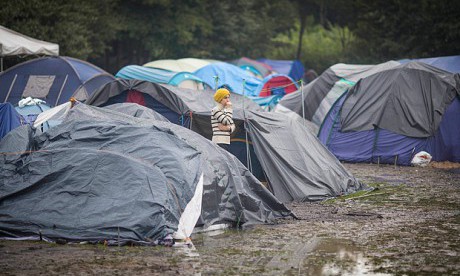“I was not born to live here like this,” says Ali. “I have three languages but I really want to learn Japanese. I love Japanese movies.” Ali is from Iran. He says he is not alone, but he seems very alone. We are in a refugee camp at Grande–Synthe, a Dunkirk suburb, sitting under a tarpaulin while people wait to see a doctor.
But to describe this as a camp is wrong. This is a swamp. There are no basic facilities. None. It’s a field of mud and tattered tents. I am surrounded by people waiting to see a doctor holding little tickets, eyeing each other with suspicion. This, at least, is better than where I have just been, where I found Afghans sleeping in a ditch.
The people I am with are worried about the children, aged as young as 10 and 11, they have seen there; “unaccompanied minors” with scabies.
Ali babbles to me non-stop about how he is all right, really. But no one here is. In June, there were maybe 150 people camped out. Now there are more than 10 times as many, predominantly Kurds.
Families are arriving all the time. The average refugee is a young man, it’s true, but there are more and more women and children. A boy of seven pulls out his prize possession to show us – a tiny fire truck.
Women sit in tents frying potatoes. They smile and chat, but everyone is cold. Everything is wet. Everyone has a story of how they got here. Some show me on their phones images of them getting out of flimsy dinghies – their witnesses to trauma.
As they have journeyed from Syria or Eritrea, fleeing Islamic State, torture, unimaginable darkness, the phones are their lifelines. They connect them back to where they have come from and to a world they are now locked out of. Continue reading
Sources
- The Guardian, from an article by Suzanne Moore, an award-winning columnist and also writes for the Mail on Sunday.
- Image: The Telegraph
News category: Features.




